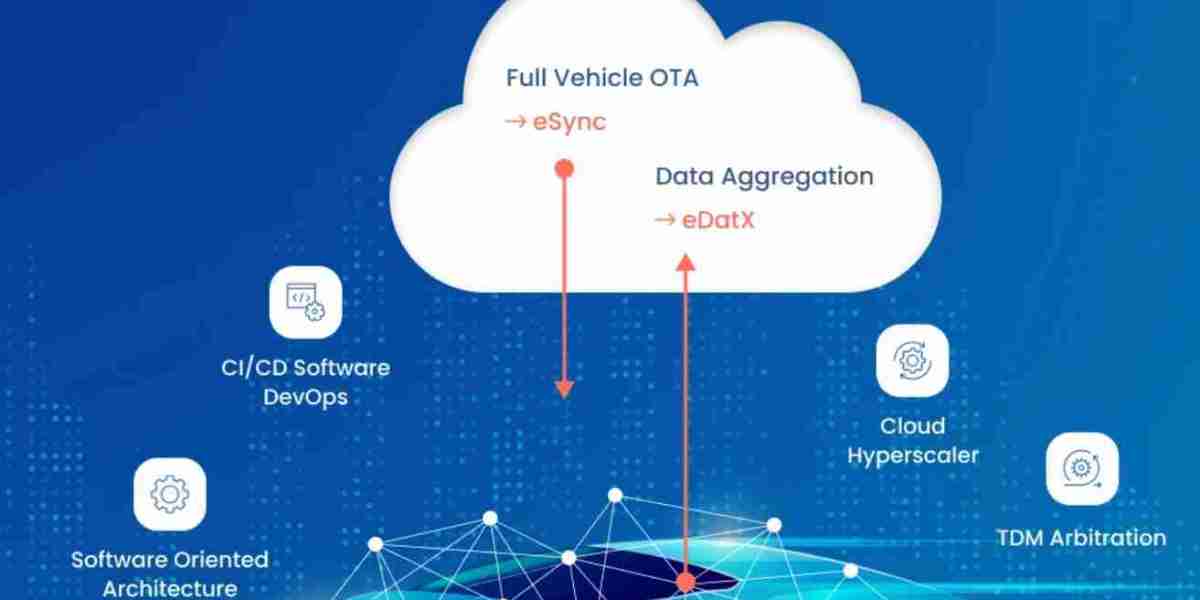The automotive industry has been undergoing a significant transformation in recent years, fueled by rapid advancements in technology. One of the key driving forces behind this evolution is the rise of connected automotive solutions, which are redefining the way vehicles interact with their surroundings, drivers, and even other vehicles. These innovations are pushing the boundaries of what’s possible, creating new opportunities for safer, more efficient, and highly personalized driving experiences. Let’s take a closer look at the importance and potential of connected automotive solutions.
What Are Connected Automotive Solutions?
Connected automotive solutions refer to technologies that allow vehicles to communicate with external systems, devices, and infrastructure through the internet and other networked platforms. This connectivity encompasses a range of features, from in-car infotainment systems to advanced driver assistance systems (ADAS) and vehicle-to-vehicle (V2V) communication. The goal is to enhance the driving experience, improve safety, optimize vehicle performance, and enable new capabilities such as autonomous driving.
Key Components of Connected Automotive Solutions
- Telematics Systems Telemetry allows cars to send and receive data over wireless networks. These systems provide real-time information about the vehicle’s health, location, fuel consumption, and other metrics. Automakers can use this data to improve the efficiency of maintenance schedules, enhance fleet management, and even offer customers personalized recommendations.
- Infotainment and Connectivity Today’s vehicles offer highly integrated entertainment and information systems, allowing drivers and passengers to access streaming services, navigation tools, weather updates, and even manage their smart home devices. Many systems now support voice commands, touchscreens, and wireless technologies such as Apple CarPlay or Android Auto, offering seamless integration with mobile devices.
- Advanced Driver Assistance Systems (ADAS) ADAS are technologies designed to assist drivers with tasks such as parking, lane-keeping, adaptive cruise control, and automatic braking. By utilizing sensors like cameras, radar, and LIDAR, these systems enhance safety by providing real-time alerts and, in some cases, taking over control of the vehicle to prevent accidents.
- Vehicle-to-Everything (V2X) Communication V2X refers to the exchange of information between a vehicle and its environment, including other vehicles, infrastructure, pedestrians, and traffic signals. This can significantly improve safety by allowing vehicles to anticipate hazards, such as a pedestrian stepping into a crosswalk or another car braking unexpectedly.
- Autonomous Driving Capabilities The ultimate ambition of many automakers is to create fully autonomous vehicles, capable of driving themselves without human input. Connected automotive solutions are at the core of these technologies, enabling vehicles to communicate with each other and the surrounding environment, which is crucial for navigation, decision-making, and avoiding obstacles.
Benefits of Connected Automotive Solutions
- Enhanced Safety One of the primary advantages of connected automotive solutions is improved safety. Through ADAS and V2X technologies, vehicles can detect potential hazards before the driver is even aware of them. This allows for timely interventions that can prevent accidents, reduce collisions, and even save lives. Additionally, predictive maintenance features can alert drivers to issues that may lead to dangerous breakdowns.
- Improved Traffic Efficiency Connected vehicles are capable of communicating with traffic infrastructure to provide real-time data on traffic conditions, road closures, and accidents. This enables drivers to receive timely rerouting suggestions, reducing congestion and enhancing the flow of traffic. V2X communication also opens the door to smarter traffic management systems, optimizing stoplights and other infrastructure to ensure smoother commutes.
- Personalized Driving Experience Thanks to connectivity, vehicles can now offer a personalized driving experience. Infotainment systems allow drivers to connect to their favorite music, apps, and settings with ease. Furthermore, telematics data can be used to offer tailored services such as fuel-saving tips, maintenance reminders, and even route suggestions based on personal preferences.
- Fleet Management For businesses that rely on fleets of vehicles, connected automotive solutions offer tools for better management. Fleet operators can track vehicles in real-time, optimize routes, ensure timely maintenance, and monitor driver behavior to improve fuel efficiency and safety.
- Sustainability and Environmental Impact Connected vehicles can play a key role in reducing emissions and promoting sustainability. With real-time data about fuel consumption, electric vehicle charging needs, and traffic patterns, drivers and fleet operators can make more informed decisions to minimize their carbon footprint. Additionally, shared mobility solutions like car-sharing programs can reduce the number of vehicles on the road, lowering overall emissions.
Challenges and the Future of Connected Automotive Solutions
While connected automotive solutions hold immense potential, there are still several challenges to overcome. Data security and privacy concerns are at the forefront, as connected vehicles collect and transmit a vast amount of information about the driver and vehicle. Ensuring that this data is protected against cyber threats is critical.
There is also the challenge of standardization. Different automakers, tech companies, and telecommunications providers may develop competing systems that may not be fully interoperable. Industry-wide collaboration will be essential to create seamless connectivity across different vehicle models and ecosystems.
Looking to the future, we can expect connected automotive solutions to become even more integrated into our daily lives. As 5G networks expand and autonomous driving technologies mature, the possibilities for connected vehicles will continue to evolve. Imagine a world where traffic jams are a thing of the past, vehicles drive themselves, and accidents are virtually eliminated. This is the vision of the connected automotive future, and it’s rapidly becoming a reality.
Conclusion
Connected automotive solutions are more than just a trend; they represent the future of the automotive industry. With their potential to enhance safety, efficiency, and convenience, these technologies are transforming how we drive and interact with our vehicles. As we move toward more autonomous, data-driven, and interconnected transportation systems, we are on the brink of a new era in mobility — one that will make our roads safer, our journeys smarter, and our driving experiences more enjoyable than ever before.





